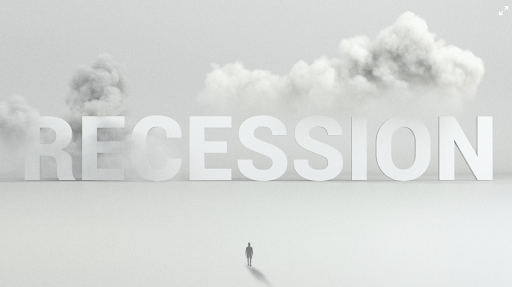
Source: unsplash.com/dkoi
Recently, the Federal Reserve announced another interest rate hike to pull the United States out of the current inflationary spiral. It’s well known that raising interest rates to combat inflation likely leads to recession. Anyone who’s worked long enough will know that the word recession can be scary. And that’s because when downturns hit, many organizations pull back rather than push through.
It’s easy to swing the ax and start chopping, but it is not the best decision for long term growth. Let’s unpack this.
1. Increase eSOV
Business leaders often have a narrow view of their competitive set. Perhaps it’s held over from years prior, but it’s oftentimes due to a lack of seeing true macro category shifts. Many competitors are solving the same problems but doing it in new ways (adjacent entrants) or are talking to customers much earlier, addressing different need states (expanded targets). When looking at the universe this way, the share of voice gets much smaller. A brand’s share of voice (SOV) communicates how their voice is versus the competitive set in terms of marketing media spend.
So why does this matter in a recession? During a recession, most companies opt to cut or dramatically reduce their marketing spend. So no matter where a brand’s current voice stands, by keeping spend consistent, a brand stands to gain in share of voice by default. This is a win that translates to future business growth. Peter Field and Les Binet describe this in their whitepaper “The Crisis in Creative Effectiveness.” In the paper, they describe a metric called eSOV. This stands for excess share of voice, and it can be calculated by subtracting SOM (share of market) from SOV (share of voice). It speaks to how much louder a brand is shouting versus the current competition.
– “Research shows that eSOV is the best budget metric. It is linked very strongly to sales growth or decline. The larger the ESOV, the more growth can be expected, but if ESOV is negative, i.e. when SOV drops below SOM, then brand sales tend to fall.” – The Crisis in Creative Effectiveness
Brands that correctly understand their category competition and continue to spend stand to gain in eSOV over the course of a downturn. In fact, Nielsen found that a 10 point difference between Share of Voice and Share of Market leads to 0.5% of extra market share growth. So, it makes sense that even just holding the line on current investment when everyone else is lowering their investment can yield wins competitively.
2. Make consumers’ lives easier
Historically tough times create some of the most innovative and inspiring companies. Let’s think back to the 2008 recession. Many loved brands came to be during this period and slightly thereafter. Brands like Instagram, Uber and Slack were small tech startups that rose to success.
Research has shown that in times of crisis, consumer problems are generally exacerbated, and most successful startups are innovators that aim to solve these problems in new and disruptive ways. In down environments, lean toward simplification. Thus, a down market is the perfect time to innovate and double down on research and development. It’s important to look toward the more distant future; most recessions are only about a year and a half.
Research also shows that established brands that invest in R&D can still win. Investments routed here are shown to drive greater long term business performance. This strategic investment builds up a stronger product pipeline that’s ready to roll when the economy picks back up. During downturns, many brands decrease this kind of strategy, so new products may have less competition in the market overall.
3. Reassess the brand
A down market is the perfect time to re-evaluate. As mentioned before, many businesses rise and fall in these economic conditions for these exact reasons. Strategic and ambitious leaders will take the time to reassess their brand goals, vision, and brand differentiation.
An evaluation like this should include the following:
– Assessment of the current marketplace
– Solidify the company’s competitive advantage
– Clearly define the brand vision, tone, and goals
This blueprint builds confidence and prepares the brand for the year(s) to come. This can be the difference between future growth and stagnation.
Make this downturn work
As with most significant changes in life and business, it’s not what happens that matters, but the response to it that creates market leaders. Whether it’s investment, innovation, or introspection, savvy business leaders will look at the situation as an opportunity to re-evaluate and will find themselves ahead of the pack when conditions return to normal.
Media Contact
Company Name: Dendro
Contact Person: Leigh Kellogg
Email: Send Email
Phone: 4043099430
Address:1170 Peachtree St., (14th floor)
City: NE Atlanta
State: GA 30309
Country: United States
Website: https://wearedendro.com/
